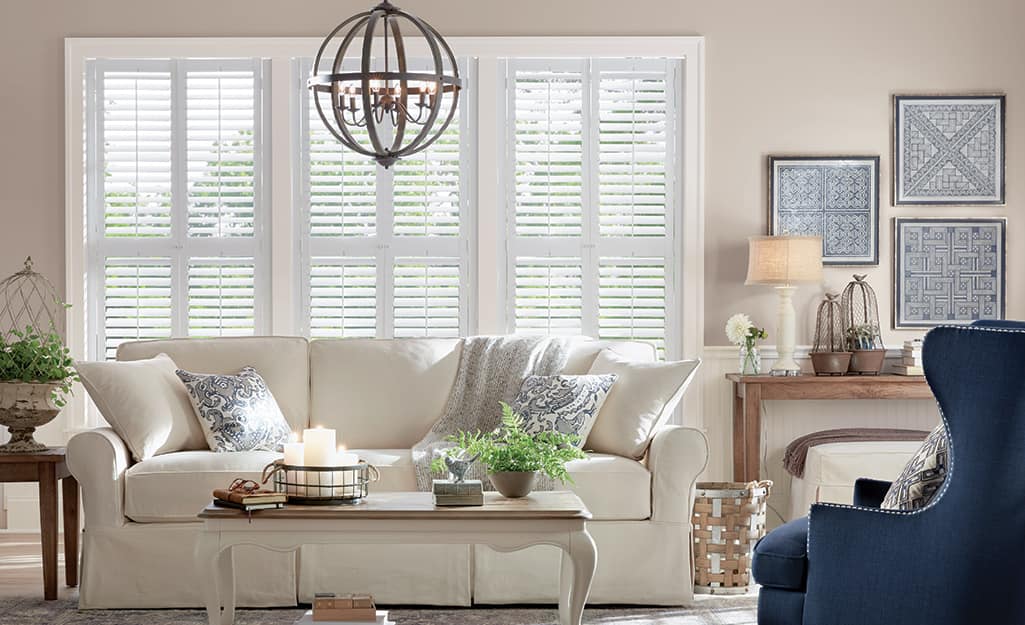Cellular shades, or honeycomb shades, are one of the most energy efficient window coverings you can buy. They use a series of honeycomb-like cell pockets to trap air around your windows, keeping your rooms warm in the winter and cool in the summer. They’re one of the best window coverings to keep heat out and to keep cold out.
Cellular shades come in a wide range of colors and can be either corded or cordless. If you have children or pets, or just prefer the neater look, consider going cordless. Cords can be a safety hazard to kids and pets, and they can be unruly and quick to tangle if you have many shades close to each other.
These shades can be inside mount or outside mount. An inside mount shade is installed within the window frame, creating a clean, custom look. An outside mount shade is installed outside of or onto the window trim, covering the entire window frame. Inside mount is the most popular option for cellular shades, but outside mount cellular shades are more energy efficient because they block more heat and light. The best window coverings to keep heat out are typically outside mount coverings.
There are different types of cellular shades with varying levels of insulating capabilities. How much insulation you get depends on two things: pleat sizes and the number of cell layers.
Pleat Sizes:
- The size of each honeycomb cell helps contribute to the amount of energy your window coverings save you. Larger pleat sizes tend to trap more air and thus, are more energy efficient for your home.
- Cellular shades are offered in 3/8-, 9/16-, 1/2- and 3/4-inch sizes.
- Pleat sizes also make a difference in design style. Small pleats look better in smaller windows, while the larger pleats best suit wider windows.
Single Cell Shades:
- Shades with just one layer of honeycomb material are generally a more affordable choice over the multilayer options. These work best in moderate climates where energy efficiency is less of a concern.
- When choosing single vs. double cell shades, consider if you are looking to add other upgrades like top-down/bottom-up lifts, room darkening liners or cordless or motorized controls. Not only can room darkening liners or blackout options help compensate for energy efficiency, but also choosing the more affordable single cell shades can allow you more upgrade options, depending on your budget.
Double Cell Shades:
- The mid-range option is the double cell shade. With an additional layer of honeycomb fabric, they are extra efficient at trapping and keeping air insulated in your home. They are also available in many colors, fabric styles and with extra upgrades.
Triple Cell Shades:
- If you live in a climate with more extreme insulating needs, consider triple cell shades. Adding these to your home can significantly reduce your utility bill and make your home more comfortable.





